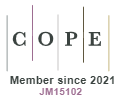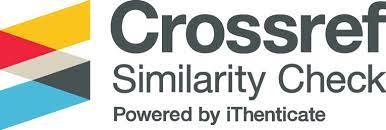Variable Interest Entity Structure as a Form of Investment Undertaken by Chinese Companies on Foreign Stock Exchanges
DOI:
https://doi.org/10.18778/2391-6478.3.31.01Słowa kluczowe:
Variable Interest Entity structure, international capital market, China, investments, stock ex-change, investment riskAbstrakt
The aim of the article: The purpose of this article is to discuss theoretical issues concerning the nature of the Variable Interest Entity (VIE) structure and to analyze the scale and functioning of companies using this structure to issue securities on foreign exchanges. The main research hypothesis was that the VIE structure is widely used by Chinese companies to issue securities on international stock exchanges.
Methodology: The basis of the research material are academic articles, reports of institutions and corporations, journal articles and other sources, as well as statistical data of companies collected on stock exchanges. Through analysis of stock market data, the authors sought to identify the number of companies operating under the VIE structure and determine the amount of capital invested on the largest international stock exchanges.
Results of the research: Empirical research indicates that the VIE structure is used by Chinese companies operating in sectors of the Chinese economy restricted by the authorities in order to issue securities, and thus raise the necessary capital for further development. The results indicate the large amount of accumulated capital, the huge number of entities involved in their operation, as well as the high risk associated with the investment.
Pobrania
Bibliografia
Brown, I.E. (2017). China’s leaked CSRC report five years later: Baseline for VIE trajectory? Houston Journal of International Law, 39(1), pp. 197–236.
Google Scholar
Charltons, (2014). Listing PRC Companies in Hong Kong Using VIE Structures https://www.charltonslaw.com/legal/ipo/Listing-PRC-companies-in-Hong-Kong-using-VIE-structures.pdf [Accessed 31.10.2020].
Google Scholar
Coppola, A., Maggiori, M., Neiman, B. and Schreger, J. (2020). Redrawing the Map of Global Capital Flows: The Role of Cross-Border Financing and Tax Havens. Becker Friedman Institute, International Economic Initiative. Working Paper 2019–118, pp. 1–54.
Google Scholar
DOI: https://doi.org/10.3386/w26855
Deutsche Börse Cash Market (2020). Listed companies in Prime Standard, General Standard and Scale https://www.deutsche-boerse-cash-market.com/dbcm-en/instruments-statistics/statistics/listes-companies [Accessed 31.10.2020].
Google Scholar
FTSE Russell (2018, September 1). Understanding China’s Economic and Market Developments: Managing China’s Transition Into Global Benchmarks https://content.ftserussell.com/sites/default/files/research/ftse-russell_understanding-china_s-economic-and-market-developments_september-2018_docx.pdf
Google Scholar
Gillis, P.L. (2014). Son of Enron: Investors Weigh the Risks of Chinese Variable Interest Entities. Journal of applied Corporate Finance, 26(3), pp. 61–66.
Google Scholar
Gills, P.L. (2019, March 13). Variable Interest Entities in China, GMT Research Guest Series, 1–2 https://www.chinaaccountingblog.com/weblog/2019-03-vie-gillis.pdf [Accessed 31.10.2020].
Google Scholar
Guo, L. (2014). Chinese Style VIEs: Continuing to Sneak under Smog? Cornell International Law Journal, 47(3), pp. 569–606.
Google Scholar
Hong Kong Exchanges and Clearing Limited (2020). List of H Share Companies https://www.hkex.com.hk/Market-Data/Statistics/Consolidated-Reports/China-Dimension?sc_lang=en&tabName=GEM [Accessed 31.10.2020].
Google Scholar
Larson, M. (2019). Alibaba’s VIE structure and erosion of beps goals in China’s e-commerce industry. Temple INT’L & Comp. L.J. 33(1), pp. 204–243.
Google Scholar
Latham & Waltkins (2019). China Introduces New Foreign Investment Law, Negative Lists, and Encouraged Industries Catalogue. Client Alert White Paper No. 2531, pp. 1–9 https://www.lw.com/thoughtLeadership/china-introduces-new-foreign-investment-law-negative-lists-and-encouraged-industries-catalogue [Accessed 31.10.2020].
Google Scholar
Lee, R.T. (2011). Understanding the VIE Structure: Necessary elements for success and the legal risks involved. Cadwalader Wickersham & Taft LLP https://www.lexology.com/library/detail.aspx?g=aa820b96-ff4a-4704-b457-243dce432a81 [Accessed 31.10.2020].
Google Scholar
Liu, C. (2018). Chinese offshore IPOs grow more reliant on shaky legal structure. Nikkei Asian Review https://asia.nikkei.com/Business/Markets/Chinese-offshore-IPOs-grow-more-reliant-on-shaky-legal-structure [Accessed 31.10.2020].
Google Scholar
London Stock Exchange (2020). AIM Issuers by country of operation https://www.londonstockexchange.com/reports?tab=aim [Accessed 31.10.2020].
Google Scholar
London Stock Exchange (2020). Issuer list https://www.londonstockexchange.com/reports?tab=issuers [Accessed 31.10.2020].
Google Scholar
Powell, J. (19.10.2019). China VIEs: the scale of exposure. Financial Times https://ftalphaville.ft.com/2019/10/10/1570714343000/China-VIEs--the-scale-of-exposure/
Google Scholar
Schindelheim, D. (2012). Variable interest entity structures in the people’s republic of China: Is uncertainty for foreign investors part of China’s economic development plan. Cardozo Journal of International and Comparative Law, 21(1), pp. 195–234.
Google Scholar
Shen, W. (2012). Deconstructing the myth of Alipay Drama–Repoliticizing foreign investment in the telecommunications sector in China. Telecommunications Policy, 36, pp. 929–942.
Google Scholar
DOI: https://doi.org/10.1016/j.telpol.2012.08.008
Shi, S.Y. (2014). Dragon’s house of cards: Perils of investing in variable interest entities domiciled in the people’s republic of China and listed in the United States. Fordham International Law Journal, 37(4), pp. 1265–1308.
Google Scholar
U.S.–China Economic and Security Review Commission. (2020). Chinese Companies Listed on Major U.S. Stock Exchanges. U.S. Government Publishing Office https://www.uscc.gov/research/Chinese-companies-listed-major-us-stock-exchanges [Accessed 02.10.2020].
Google Scholar
Whitehill, B. (2017). Chinese Companies and the VIE Structure. Council of Institutional Investors https://www.cii.org/files/publications/misc/12_07_17%20Chinese%20Companies%20and%20the%20VIE%20Structure.pdf [Accessed 01.10.2020].
Google Scholar
Pobrania
Opublikowane
Jak cytować
Numer
Dział
Licencja

Utwór dostępny jest na licencji Creative Commons Uznanie autorstwa – Użycie niekomercyjne – Bez utworów zależnych 4.0 Międzynarodowe.














